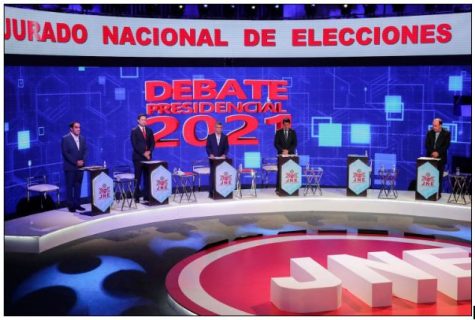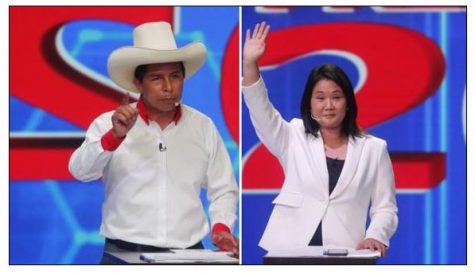Peru 2021: Polarized and now will go to the second round
April 14, 2021

BREAKING NEWS: According to the Ipsos-América TV quick count to 90%, the candidate of Peru Libre, Pedro Castillo, obtained 18.1% of the votes while Keiko Fujimori, of Fuerza Popular, obtained 14.4% of support. Rafael López Aliaga reached 12.4%.
On the eve of the commemoration of the Bicentennial of Peru’s independence and with a pending agenda to fight the pandemic and economic reactivation, the first round of the general elections leaves us a divided and polarized country. According to the quick 90% count carried out by Ipsos-América TV, Pedro Castillo, the candidate of Peru Libre and representative of the most radical left, obtained 18.1% of support for which he will contest the Presidency of the Republic in the second round with Keiko Fujimori, from Fuerza Popular, who achieved 14.4%.
Castillo – the candidate of the group led by Vladimir Cerrón sentenced for corruption – gained visibility in 2017 when he promoted a prolonged teacher strike leading the Sute Conare faction, which is none other than Movadef, the political arm of the Shining Path terrorist organization.
Despite these antecedents, the Cajamarcan professor managed to displace from the first position the candidate of Popular Action, Yonhy Lescano, who until a week ago occupied the first place in the intention to vote with 14.7%, according to the latest poll published by Ipsos.
Rafael López Aliaga, from Renovación Popular, for his part, is in third place with 12.4% while Hernando de Soto was in fourth place with 10.8%.
Behind him is Yonhy Lescano with 9.7%, Verónika Mendoza from Juntos por el Perú with 7.9% and Daniel Urresti from Podemos with 5.8%. Very close is George Forsyth of Victoria Nacional with 5.5%.

Second round
From Chota, Cajamarca, Castillo thanked the support of the population while in Lima, Dina Boluarte, candidate for the first vice president, did not rule out the possibility of seeking alliances with other groups with a view to the second round. What she did make clear is that the statist proposal of Peru Libre will not be modified in that search for support. “We will analyze the possibility, not only with the left-wing parties… we are not going to change like other candidates, we have told the Peruvian people: this is what we think and that is what we are going to do.”
Keiko Fujimori, meanwhile, in her first statement, was confident that the final official results of the ONPE will confirm her passage to the second round on June 6. She reiterated her “strong hand” message, adding that “the battle is just beginning.”
Later, however, in a conciliatory tone, she sent a message to De Soto: “It doesn’t matter who goes to the second round, I hope we can work together.” She and she added: “There are many coincidences with the candidates and parties of the first platoon; I invoke them who have indicated that they believe in the private investment model, that they do not want Peru to become Cuba or Venezuela, ”she stressed, implicitly alluding to the interventionist government proposals of Pedro Castillo.
But this panorama at the presidential level could vary in the congressional chamber where, according to the exit projections of Ipsos, although Peru Libre would have the first minority, the second would fall on Popular Action.
IPSOS: (Ipsos Peru is an organization of professionals passionate about research that aspires to give a voice to citizens and consumers so that society and the market can better serve their needs.)
ONPE: (National Office of Electoral Processes)


